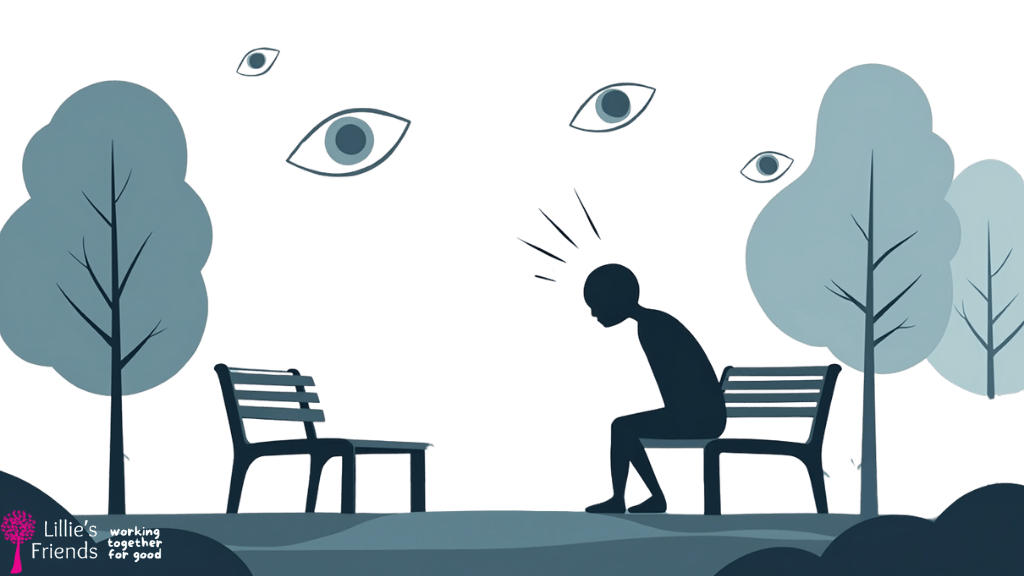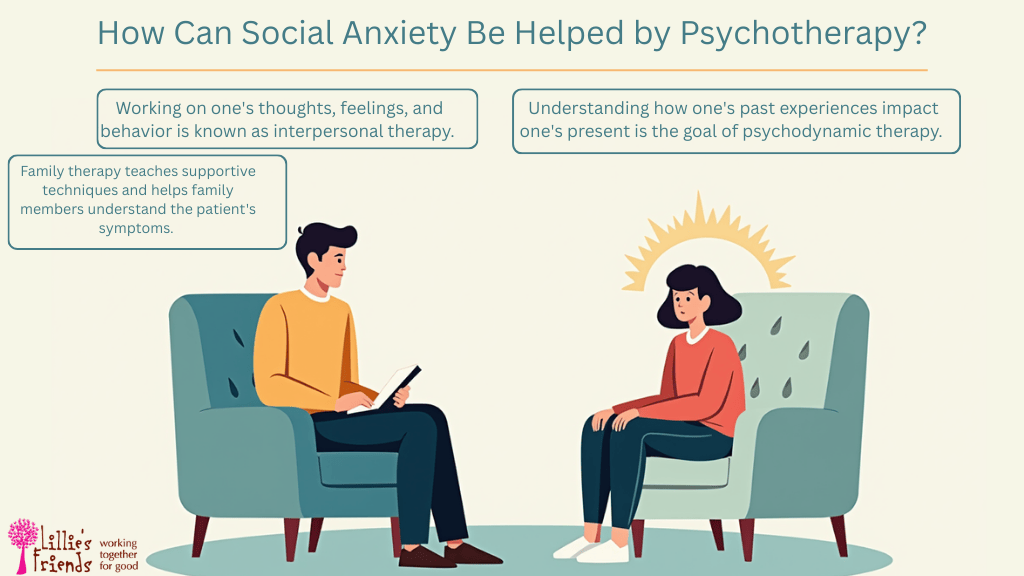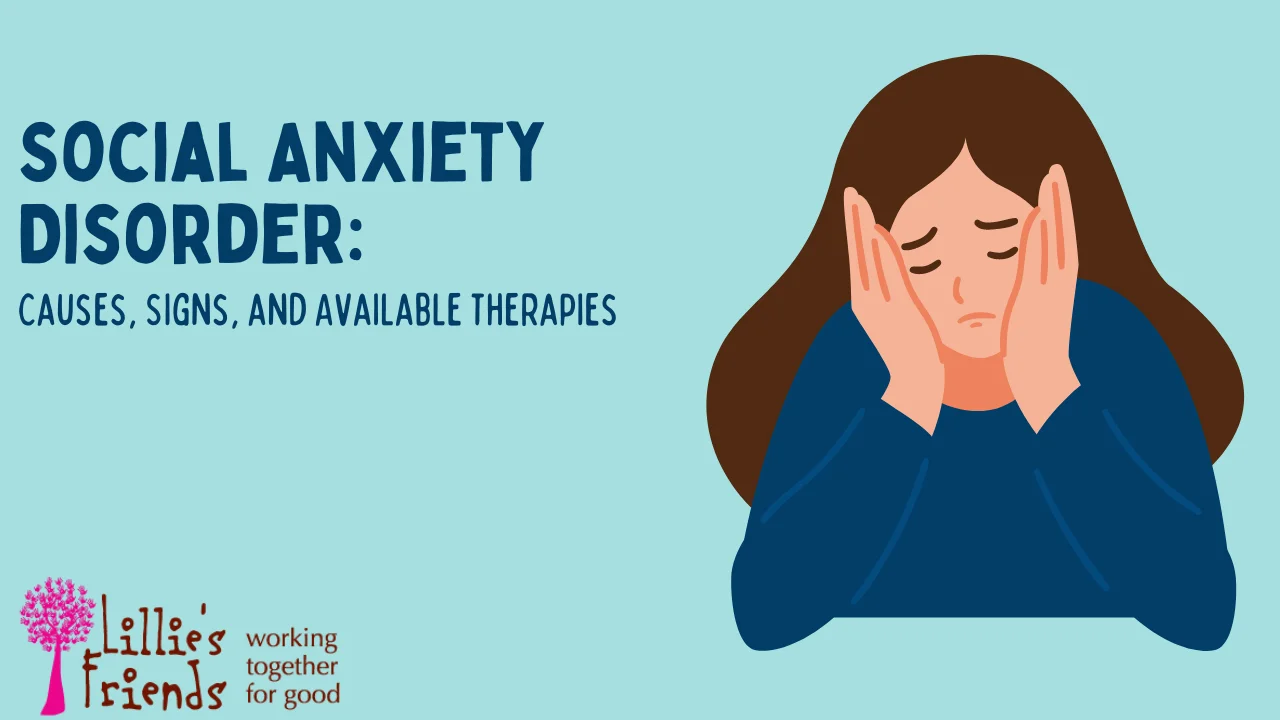Social Anxiety Disorder: Definition
The Anxiety and Depression Association of America reports that social anxiety disorder, the second most prevalent anxiety condition, affects 15 million adult Americans[1*]. Overwhelming dread and feelings of embarrassment or humiliation in public or on social media are characteristics of this illness.
Extreme self-consciousness and a dread of receiving unfavorable feedback from others are two symptoms of social anxiety. In social contexts, those who suffer from this fear may feel as if they are being observed, assessed, analyzed, or condemned. Usually, it first becomes noticeable in adolescence.
Two categories of social phobias are identified by the Diagnostic and Statistical Manual of Mental Disorders (DSM-5): generalized social anxiety, which is the dread of all social settings, and specific social anxiety, which is the fear of particular circumstances.

Why Do People Get Social Anxiety?
Here are a few of the most typical reasons why people have social anxiety disorders
- Environmental elements. Social anxiety disorder may emerge as a result of several environmental factors. For instance, someone who experienced bullying or harassment as a youngster may find it awkward to interact with others. Negativity can harm their psyche, leading to poor self-esteem and social anxiety.
- Understanding the brain. The brain region known as the amygdala is responsible for controlling emotions and social cognition. It’s also connected to the fight-or-flight reaction, which occurs when individuals perceive a danger and release adrenaline and cortisol to be ready to fight or run. Social anxiety may result from an overactive amygdala that makes it harder for a person to manage their fear reaction.
- Heredity. Additionally, genetics contribute to the development of social anxiety. Individuals with a family history of anxiety disorders, particularly social anxiety disorder, are more likely than those without such a history to have anxiety disorders themselves.
Symptoms of Social Anxiety Disorder
Typical signs of social anxiety disorder include the following:
1. Symptoms pertaining to emotions, behavior, and cognition
- Embarrassment fear
- Insecurity
- Excessive nervousness around other people
- Nervousness while interacting with people in general, attending social gatherings or parties, and meeting new individuals
- Steering clear of others
- Experiencing humiliation or embarrassment after an error made in public
- Having self-consciousness while interacting with others
- Feeling constantly monitored, assessed, or appraised (hypervigilance)
- Giving up on once-enjoyable social activities because they’re now too stressful
- Being afraid to be in public spaces with other people
2. Somatic Symptoms
The following are somatic indicators of social anxiety disorder:
- Blushing
- Perspiring
- Quick heartbeat
- Shivering
- Tension in the muscles
- nauseous and painful stomach
- Lightheadedness or dizziness
- A lump in the throat (globus feeling), dry mouth and throat, or trouble swallowing
- A sense of detachment from oneself (depersonalization) or of unreality (derealization)
- The worry that one may lose control or act in a manner that will be degrading or embarrassing

Treatment for Social Anxiety Disorder
Therapy for social anxiety typically falls into two main categories:
1. Counseling
The goal of psychotherapy is to assist the patient in recognizing and altering their emotions, ideas, and behaviors. Individual or group treatment sessions are available for patients. Through psychotherapy, they learn more efficient coping mechanisms for the symptoms. It could include studying stress management or relaxation methods for social anxiety.
Cognitive-behavioral therapy (CBT)↗ Patients with anxiety disorders may learn new thought patterns via cognitive behavioral therapy.
The aim is for patients to see themselves less as passive objects of circumstance and more as active participants in their lives. Aside from CBT, some of the greatest types of psychotherapy are as follows:
- The goal of interpersonal therapy is to assist patients in comprehending the interactions between their ideas, emotions, and actions.
- The goal of psychodynamic therapy is to assist patients in comprehending how their previous experiences have shaped their present-day conduct.
- Family therapy teaches members of the family how to support one another in managing the signs and symptoms of a mental illness.
2. Drugs
Treatment for social anxiety disorders involves a number of drugs, but not before a social anxiety disorder test. These may aid in symptom management and improve a patient’s comfort level in social settings such as the workplace and classroom.
The doctor will weigh the advantages and disadvantages of each course of therapy before determining if medicine is the best option. Examples of these include
- In extreme situations, patients’ anxiety feelings may be lessened by anti-anxiety drugs like Xanax or Klonopin. However, when used with alcohol or other substances, they may have very negative adverse effects.
- Another option is to take antidepressants. That being said, it may take a few weeks or months before they begin to function well enough to have an impact.
- Patients with anxiety disorders such as social anxiety and panic attacks may be administered beta-blockers.
In summary
Although social anxiety disorder may be very crippling for those who experience it, individuals can heal and get over this disease with the right care. Anyone who thinks they may have social anxiety disorder needs to talk to their doctor and get the support and assistance they need. After receiving a diagnosis, a patient may manage their symptoms with a variety of treatments, allowing them to lead normal lives.











